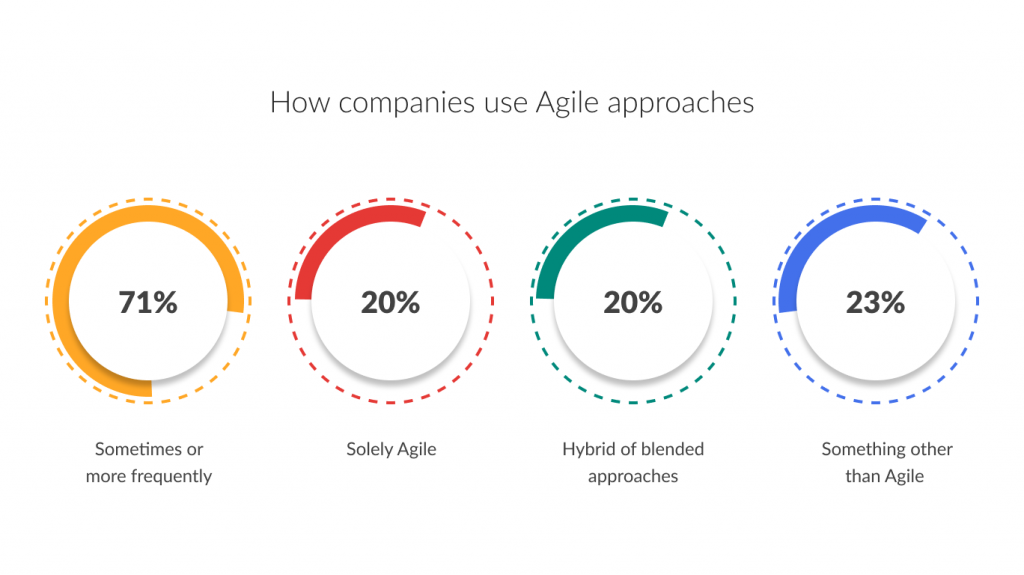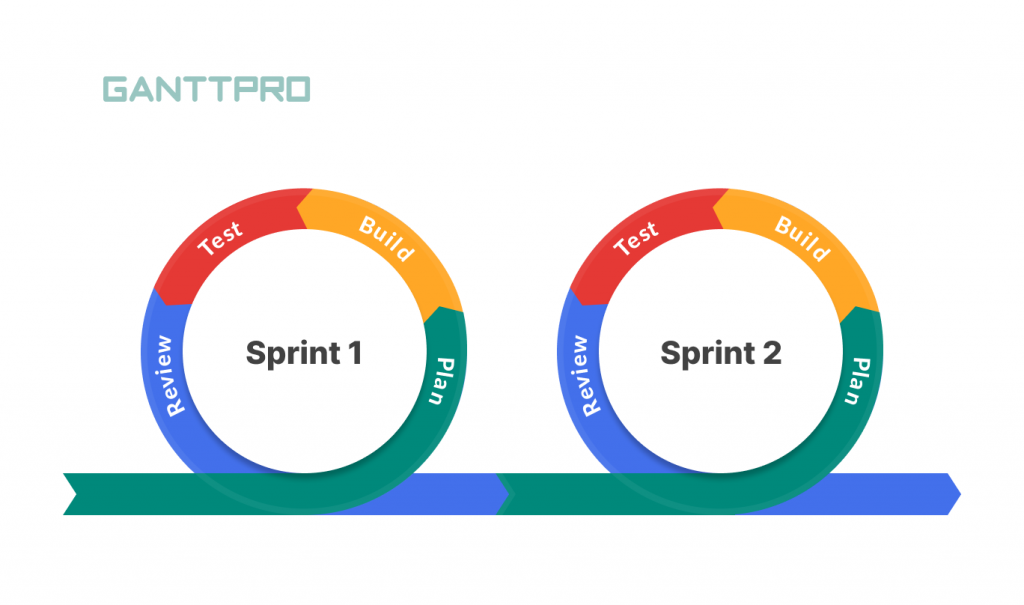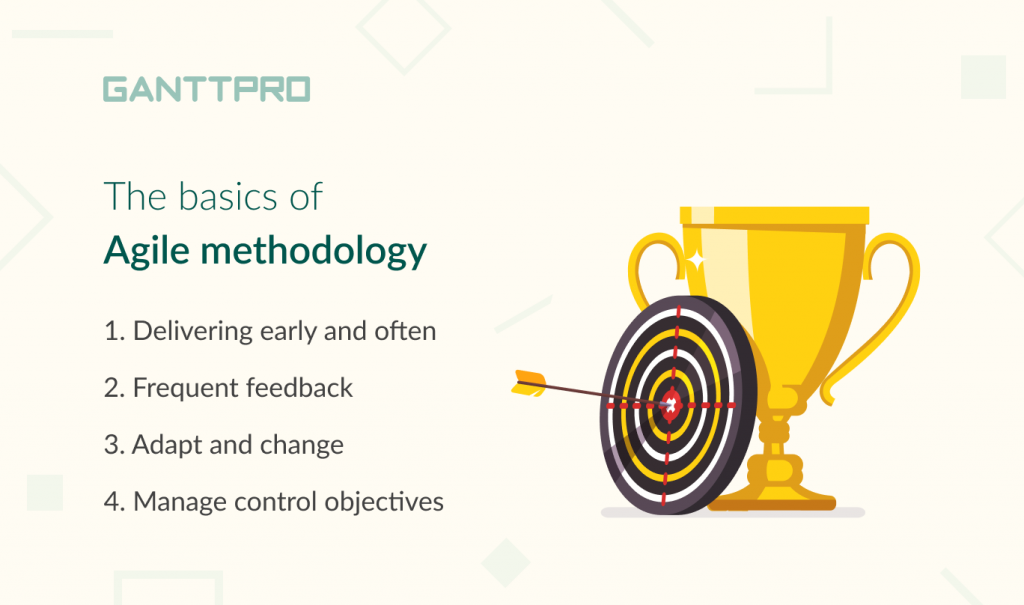Why Agile is so Popular in Project Management

Audio version:
From the early 2000s to today, the Agile methodology continues to be popular in project management. Now, it even extends past its software development roots to encompass other non-software industries that need to be able to respond quickly to market and environment changes.
Whether it’s new software or a company process, adopting Agile techniques are helping companies become more flexible. With the right mindset and frameworks, businesses can harness teams working more efficiently, with better alignment to the company’s goals while managing time and resource constraints.
The Agile method
In a nutshell, Agile is an approach to project management that involves breaking up an end product into several smaller stages or tasks that can be delivered quicker. These tasks are regularly assessed by stakeholders, allowing the teams to respond to changes faster by iteratively building the end product.
The continuous feedback system built into the methodology helps both teams and stakeholders. The latter can see incremental results and continually assess the suitability of the completed work against the end goal of the project. The teams, on the other hand, work with more defined sections and can quickly respond to even project-wide changes due to the incremental nature of the work.
In fact, 71% of surveyed companies have used Agile approaches sometimes or more frequently than in the past. Also, 20% of companies have reported using at least Agile while another 20% reporting they have used hybrid or blended approaches. 23% of companies have used something other than Agile.

This popularity spans across industries. No matter the size of the project or the volatility of the market, the end result can be closer to current business needs than if other, more traditional methods are used.
Why move to Agile
There are several reasons why Agile is a popular tool for organizations, whether dabbling in software development or not.
- Teams learn quickly through the frequent and quick iterations of work.
- Agile methodologies can result in faster delivery of prototypes.
- Faster releases mean faster improvements available to the end users of the product.
- Teams can assist each other in collaborative troubleshooting.
- Changes and tasks are prioritized accordingly by the whole team.
- Quick feedback is available for each iteration of the product.
- The end product can easily stay abreast of market changes through continuous improvement.
- Corrections based on stakeholder feedback can be more quickly addressed.
Agile provides all these benefits to projects and teams through several basic elements, regardless of which Agile methodology is used.
Agile: the basics
Agile’s effectiveness stems from how it emphasizes individual work and interactions over convoluted processes and tools, though tools for team collaboration are still important.
A typical feature of Agile methodologies is the adoption of short two-to-four-week “sprints”, where teams complete smaller tasks that feed into a bigger whole. This is in contrast to traditional project management approaches where timeframes can stretch into months or even years. You can learn more form special books on Agile.

Between the popular methodologies within Agile such as Scrum, Kanban, Extreme Programming, and the like, the following basic elements are common:
1. Delivering early and often
Whether Agile is applied to software development or other industries, making sure that the end product (software, process, product prototype, etc.) is delivered early and updated often is a vital part of Agile.
Oftentimes, a Minimum viable product (MVP) is delivered as early as possible, which aids in ensuring that the end product meets the basic requirements of the target users, as well as gaining valuable feedback for future iterations.
The work, however, doesn’t stop with the delivery of the MVP. The product is continuously improved through consecutive sprints, with additional feedback and direction based on the MVP and previous sprints.
Smaller, more targeted releases of the product have multiple benefits, including fewer bugs and errors and quicker pivots in case of changes to the end goal.
2. Frequent feedback
With a quickly-delivered MVP, it’s inevitable to receive early and valuable feedback from end users. They become one of the stakeholders of a project, alongside business stakeholders, and their feedback becomes valuable to ensure a product that works.
Based on the results of a release, collated feedback from stakeholders should be prioritized according to multiple categories, such as complexity and urgency. This feedback collection is important for any Agile methodology, as it feeds into subsequent sprints to improve the product.
The shorter, more frequent releases and regular management of feedback is also important, to ensure that the project team can easily see the trajectory of the whole project and quickly focus on any environmental changes that need to be addressed.
3. Adapt and change
Businesses don’t like surprises, but the market oftentimes does not cooperate. A methodology that makes it easier for companies and teams to embrace change is important, and Agile does exactly that.
The frequency of releases and feedback as well as short sprints contribute to the ability to incorporate changes into the product with a minimum of effort. A short cycle between releases helps in managing the steady crawl of change, allowing development and the actual market to keep in pace, rather than development needing to catch up to market requirements in leaps and bounds.
4. Manage control objectives
It is a common misconception that Agile weakens control, or that mature control processes cannot work with Agile methodologies. However, a well-designed Agile implementation specific to an organization’s needs can address these control objectives in a lean and efficient way, using tools and processes available to the business.
These can include various project management tools, reporting tools for internal and external stakeholders, and implementation of quality and control standards.


Online project management tool based on Gantt charts
Get a highly visualized project picture with all the details.
Sign up for freeThese control activities may differ in an Agile environment, but can address the same control objectives of any organization.
Challenges of Agile
Agile is not without its challenges, however. Whether businesses are eager or skeptical about this methodology, there can be pushback or unexpected challenges in any organization’s adoption of Agile.
These can include:
- Management of control objectives versus control activities.
- Changing from a defined, specific project cost to a more iterative approach.
- Balancing planning activities versus more fluid iterations.
- Cultural resistance to change of process and mindset.
- Agile burnout due to erroneous estimation of tasks and workload.
- Lack of clarity around roles leading to inefficiencies in task assignments.
However, putting into place clear business goals and starting small can help manage these challenges. Taking on the Agile methodology for the rollout itself (starting small and early and working on continuous improvement over time) will make adoption easier.
Choose Agile for efficient project management
In a fast-paced world where the market changes quickly and can render a product quickly obsolete, a methodology that maintains flexibility throughout the process is a tremendous help.
These days, Agile is popular not only for software development projects, but can be applied over a wider range of industries. All it takes is a clear goal from the business and a focus on continuous improvement.
